Written by Jonathan Wojcik
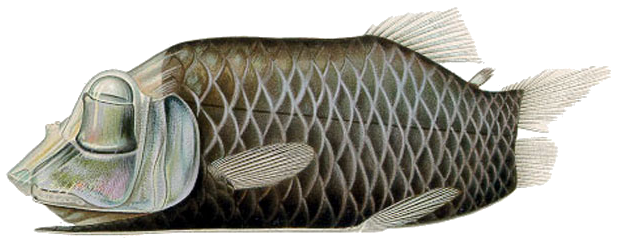
Barreleyes or "spookfish" comprise the family Opisthoproctidae, and boast some of the
strangest faces in the vertebrate world. Oval or cylindrical in shape, their binocular-like eyes are finely tuned to detect the silhouettes of prey even in pitch darkness, and in species like Opisthoproctus soleatus, shown here, the eyes may be permanently directed upwards. Their toothless mouths are adapted to suck in smaller prey, such as copepods or worms.
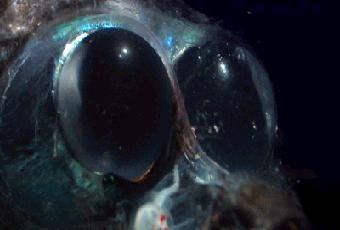
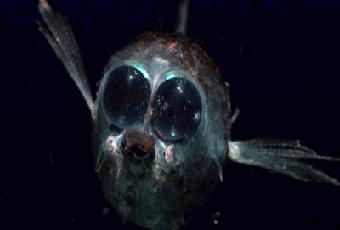
Winteria telescopa is a slightly different spookfish, with especially massive, egg-shaped eyes
directed forwards and a gelatinous, transparent head. Surrounding its snout are three red
specks of completely unknown function.
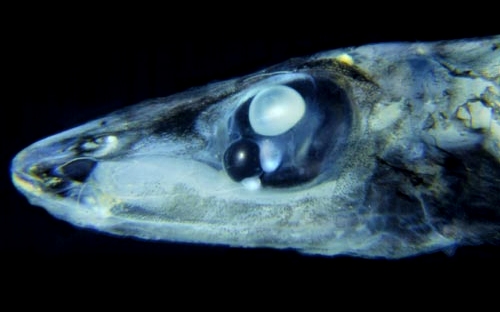
Photo by Hans-Joachim Wagner
Not to be outclassed by bigger eyes, Bathylychnops exilis goes for sheer quantity. A pair of bulges beneath its upturned eyes were once thought to be light producing organs, but were found to have functioning lenses and retinas of their own, making them "accessory" eyes. Later, it was discovered that the fish had yet a third set of eyes hidden behind the second. These tiny orbs lack retinae, but help to collect more light and direct it to the primary, uppermost eyes.
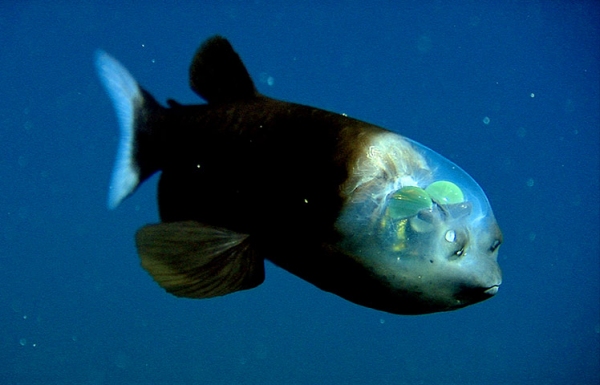
Perhaps the most bizarre of all is Macropinna microstoma, which possesses a transparent, cockpit-like dome over the eyes (the green orbs in this image) believed to protect them from the stingers of siphonophores, which they may steal food from. These eyes can move independently, like a chameleon. When it spies a siphonophore or jellyfish above, it aims its entire body vertically towards its potential meal.

|

|

|
|
|
|
|